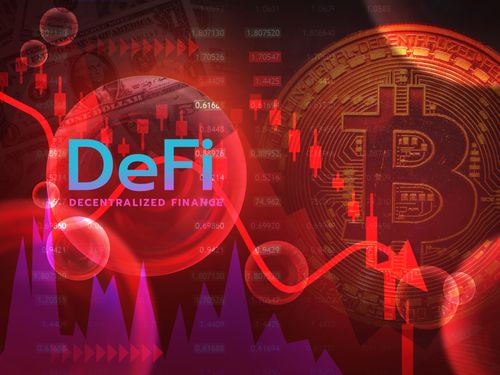Imagine a joke so good, it turned into a $58 billion phenomenon. That’s the story of Dogecoin — the cryptocurrency with a Shiba Inu mascot that started as a playful poke at the crypto world and ended up rewriting it. Today, Dogecoin isn’t just a coin, it’s a symbol of community power, the influence of social media, and how humor can drive economic waves.
But how did we get here? This is the story of Dogecoin’s rise—its humble beginnings, the community that made it a force to reckon with, and the people who turned it into a movement.
The Birth of Dogecoin: A Joke with Serious Consequences
Picture this: two software engineers, sitting at their desks, chuckling over the idea of creating a cryptocurrency that pokes fun at the serious world of Bitcoin. It was 2013, and Bitcoin was making headlines as a revolutionary new form of digital money. But for Billy Markus and Jackson Palmer, the crypto space felt... too serious. So, they took inspiration from the lovable Shiba Inu meme, “Doge,” and created a cryptocurrency that was lighthearted, inclusive, and downright fun.
When asked about Dogecoin's inception, Markus once said, “I thought it was a really ridiculous idea that would probably die out in a few weeks. But it seemed like a lot of fun, so I went along with it.” Palmer echoed this sentiment, saying, “Dogecoin wasn’t created to make us rich; it was created to make people smile. It’s about bringing a sense of joy to an industry often too focused on technical jargon.”
Well, their vision worked. Dogecoin’s lighthearted nature quickly caught on within online communities, attracting an eclectic mix of enthusiasts who embraced its playful ethos. It became a way to connect, to laugh, and to make small contributions with big impacts.
From Memes to Miracles: The Power of Community

Cute Doge dog sits on a table | Elon Musk/Twitter
What made Dogecoin different? It wasn’t the tech or the profits; it was the people. The Dogecoin community embraced the coin with open arms, tipping content creators online and raising funds for charitable causes. But then, something extraordinary happened—something no one could’ve predicted.
The spark came in 2014, when the Dogecoin community raised $30,000 to send the Jamaican bobsled team to the Winter Olympics. The team had qualified but lacked the funds to compete. Inspired by the story, Dogecoin users mobilized, contributing small amounts that snowballed into something extraordinary. The campaign showed how a global group of internet strangers could achieve tangible results.
Later that same year, the Dogecoin community turned its attention to NASCAR. They raised over $50,000 to sponsor driver Josh Wise, enabling him to compete in the Aaron’s 499 race. The “DogeCar,” emblazoned with Dogecoin’s Shiba Inu logo, became a viral sensation, symbolizing the community’s creativity and determination. The Jamaican team became the talk of the Olympics. While they didn’t win a medal at the Winter Olympics, their story inspired millions and demonstrated the power of decentralized grassroots action, embodying resilience and community spirit.
Wise, meanwhile, became a fan favorite, finishing 20th at Talladega. As Markus reflected later, “It showed what an engaged group of people could accomplish, even with something as silly as a meme.” Even today, the coin’s users continue supporting grassroots initiatives, keeping alive the question: Could charity be Dogecoin’s ultimate use case?
Enter Elon Musk: The Billionaire Playing with Doge

Featured Photo | Shutterstock
Dogecoin’s playful image captured attention early, but it was Elon Musk who turned it into a sensation. Few figures have wielded as much influence over a cryptocurrency as Elon Musk has with Dogecoin. Known for his provocative tweets and playful online persona, Musk began mentioning Dogecoin on Twitter (now X) in 2020. What started as lighthearted memes soon became market-moving events.
Musk’s tweets were often cryptic and humorous. In one, he called Dogecoin “the people’s crypto.” In another, he posted a photoshopped image of himself as Rafiki from The Lion King, holding up a Shiba Inu dog instead of Simba. Each tweet sent Dogecoin price soaring, leading many to wonder: Was Musk genuinely invested in Dogecoin, or was he simply enjoying his influence?
The truth appears to be a mix of both. While Musk’s public statements and memes were playful, his actions suggested a deeper interest. He revealed that he personally owned Dogecoin, describing it as “the most fun cryptocurrency.” Beyond his financial stake, Musk consistently advocated for Dogecoin’s adoption, even suggesting it as a viable payment method for Tesla merchandise.
The height of Musk’s influence came in May 2021, when he hosted Saturday Night Live. Leading up to the show, speculation ran wild that he would mention Dogecoin, sparking a buying frenzy. Dogecoin’s value surged to nearly $0.74 — its all-time high. But when Musk jokingly referred to Dogecoin as a “hustle” during the broadcast, the price plummeted. The episode underscored both Musk’s power and the volatility of Dogecoin’s market.
After the initial whirlwind created by Musk’s tweets and the Saturday Night Live appearance, you might expect his enthusiasm for Dogecoin to wane. But Musk is anything but predictable. Fast-forward to 2024, and Musk continues to tweet about Dogecoin, albeit with less frequency. His posts range from cryptic memes to more direct endorsements, each time reigniting interest among investors and the Dogecoin community.
His announcement about co-heading DOGE alongside Vivek Ramaswamy gave Dogecoin a fresh boost, aligning the coin with his broader vision of innovation and efficiency. This connection resonated with many who see cryptocurrencies as tools for disrupting outdated systems. Musk has even integrated Dogecoin as a payment method for select Tesla merchandise, reinforcing his commitment to the coin.
Beyond The Jokes: The Possibility of Real Value for Memecoins
Think of the crypto market as a bustling bazaar. Bitcoin and Ethereum are like established merchants, commanding respect but often intimidating newcomers. Dogecoin, on the other hand, is the street performer drawing crowds with humor and charm, proving that popularity isn’t always about pedigree.
And now, Dogecoin’s success raises an important question: Do cryptocurrencies need traditional utility to thrive? Typical crypto assets gain value through utility—smart contracts, decentralized apps, or solving real-world problems. Bitcoin, for instance, has been popularly promoted in the crypto community to serve as digital gold, while Ethereum powers decentralized finance.
Memecoins like Dogecoin, however, operate differently. They derive value from community, culture, and viral appeal. Unlike speculative tokens that fade, Dogecoin has built enduring value through charity, humor, and grassroots support. Could charity become its core use case? Perhaps, but even without a clear utility, Dogecoin shows that value in the digital age isn’t always about solving problems — it can also be about creating connections.
However, Dogecoin can learn from outliers like Chainlink, which turned its niche use case — connecting blockchain data to real-world systems into mainstream success. For Dogecoin, leveraging its community-driven ethos while exploring practical applications, such as microtransactions or decentralized tipping platforms, could solidify its standing. Dogecoin’s community could also solidify its role as the go-to crypto for charity if it focuses on recurring, impactful projects.
The Bottom Line

Featured | Shutterstock
Dogecoin’s story isn’t about being the most advanced or the most valuable cryptocurrency. It’s about heart. It’s about a community that turned a joke into a $58 billion phenomenon. From Olympic dreams to NASCAR races, from Elon Musk’s tweets to grassroots charity efforts, Dogecoin proves that value isn’t always about utility—it’s about connection.
As it navigates the challenges of a rapidly evolving crypto landscape, one thing remains clear: Dogecoin isn’t just a coin—it’s a movement. Whether it finds its niche in charity, microtransactions, or remains a cultural icon, its story is far from over. And if we’ve learned anything from Dogecoin, it’s this: never underestimate the power of a good meme — and a great community.
Whether you see it as a serious financial asset or just a fun experiment, Dogecoin has reshaped the cryptocurrency landscape in a way few could have imagined. So, the next time someone asks, “Why Dogecoin?” you can tell them it’s not just about the coin — it’s about what it represents. A movement. A laugh. An audacious, nonconformist leap into the future of finance.




